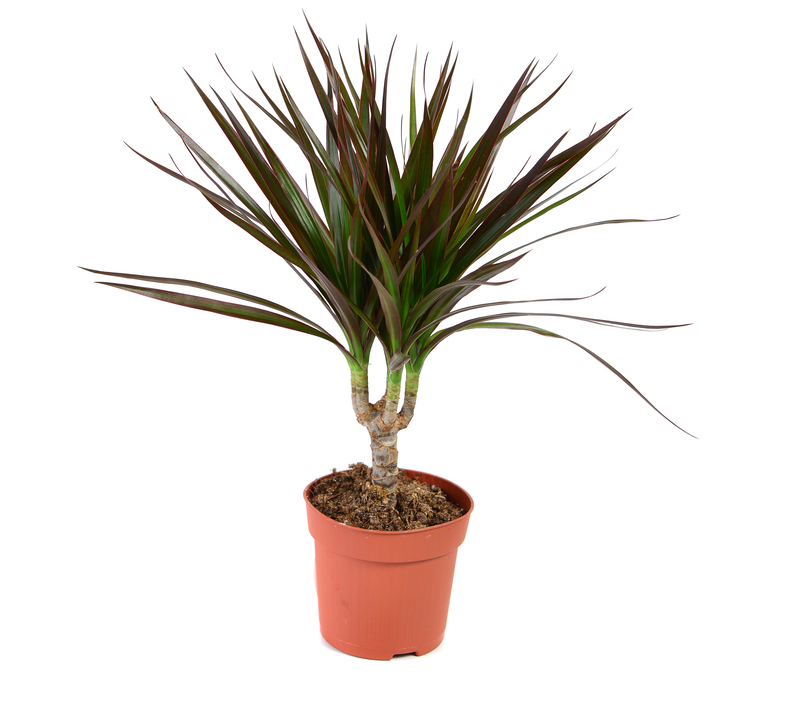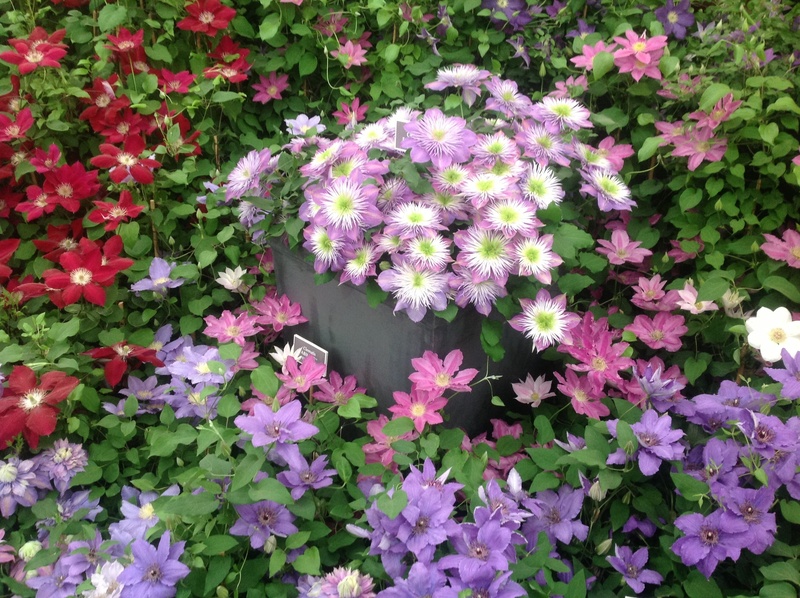Grow Your Personal Haven: How to Choose Tall-Potted Plants for Screening
Creating privacy in your outdoor or indoor spaces is often one of the main goals for homeowners, tenants, or garden enthusiasts. If you're seeking tranquility, beauty, and a bit of solitude, tall-potted plants for screening can help you achieve just that. In this comprehensive guide, you'll discover everything you need to know about selecting tall plants for privacy screening, understanding their benefits, and getting tips to maximize your garden's seclusion and style. Read on to transform your living space into your own personal haven!
Why Use Tall-Potted Plants for Screening?
Modern homes often come with limited outdoor or indoor space, making tall-potted privacy plants an ideal solution for both aesthetics and functionality. But why use these plants specifically for screening?
- Portable Privacy: Potted plants are mobile, giving you the flexibility to move your green screens as needed.
- Easy Installation: Unlike permanent fences or walls, you don't need contractors or permits to set up potted plants.
- Versatility: Tall-potted plants work for balconies, patios, porches, terraces, and even indoors.
- Natural Beauty: Live plants add vibrant color, texture, and organic ambiance to any environment.
- Environmentally Friendly: Using plants improves air quality, boosts biodiversity, and supports beneficial pollinators.
- Noise Reduction: Thick, leafy plants help absorb and dampen noise from busy roads or neighbors.

Key Considerations for Choosing Tall Potted Plants for Privacy Screening
Before rushing to your local nursery or browsing online, keep these important factors in mind to ensure you pick the right tall privacy plants for your needs:
1. Sunlight Requirements
- Full Sun: Many screening plants need at least 6 hours of direct sunlight a day.
- Partial Shade: Choose plants that thrive with less sun if your area is shaded by buildings or trees.
- Indoors: For indoor privacy, look for plants that do well in lower light conditions.
2. Climate and Hardiness
- Check the hardiness zone of each plant and ensure it matches your region.
- Consider microclimates--areas that are sheltered, windy, or particularly hot or cold.
3. Plant Growth and Mature Height
- Verify the mature height and spread of your chosen plant variety.
- Remember that some tall plants grow slowly, while others shoot up quickly!
4. Container Size
- Avoid using containers that are too small. The pot must support your plant's root network for healthy, tall growth.
- Use sturdy, weather-resistant pots made from materials such as concrete, resin, or ceramic for outdoor use.
5. Maintenance and Care
- Choose low-maintenance species if you prefer minimal intervention.
- Consider if the plant drops leaves, needs regular pruning, or has specific watering needs.
6. Evergreen vs. Deciduous
- Evergreen plants provide year-round coverage, making them ideal for privacy screens.
- Deciduous plants lose their leaves in winter, reducing screen effectiveness but offering seasonal interest.
Top Choices: Best Tall-Potted Plants for Screening
Let's explore a range of excellent tall plants for privacy--each variety comes with its unique look, function, care level, and growth habit. Here are some top recommendations:
1. Bamboo (Bambusoideae)
- Pros: Fast-growing, dense foliage, evergreen, and dramatic vertical lines.
- Cons: Some types are invasive in open soil; restrict rhizomes when potting. Requires regular watering.
- Best Varieties: Clumping bamboos like Bambusa multiplex, Fargesia, and Bambusa textilis are ideal for pots and screening.
2. Italian Cypress (Cupressus sempervirens)
- Elegant, columnar evergreen suitable for narrow spaces.
- Grows up to 10-20 feet in a large pot. Needs full sun and well-drained soil.
3. Privet (Ligustrum spp.)
- Classic hedge plant adaptable to pots; evergreen in mild climates.
- Tolerates trimming for formal or informal looks.
4. Arborvitae (Thuja spp.)
- Soft-textured, lush green foliage. Stays compact and dense, making it perfect for privacy screens.
- Best for cooler climates with moist, well-drained soils.
5. Laurel (Prunus laurocerasus)
- Robust broadleaf evergreen. Adaptable to shade and sun.
- Large leaves form thick walls of green throughout the year.
6. Boxwood (Buxus sempervirens)
- Slow-growing, classic look. Ideal for smaller, formal screens on patios or balconies.
- Handles regular pruning into dense hedges.
7. Photinia (Photinia x fraseri)
- Attractive red-tipped new leaves make this tough screening shrub visually striking.
- Performs well in large pots, offering fast growth and year-round interest.
8. Clumping Grasses (Miscanthus, Cortaderia, Panicum)
- Ornamental grasses provide soft movement, quickly growing up to 6-10 feet. Choose hardy varieties for pots.
- Low-maintenance and drought-tolerant once established.
9. Oleander (Nerium oleander)
- Evergreen shrub with colorful summer flowers. Thrives in warm climates and pots.
- Note: All parts of oleander are toxic--avoid where pets or young children play.
10. Ficus (Ficus benjamina, Rubber Plant)
- For indoor settings, tall ficus species offer full, leafy screens suitable for dividing rooms or covering windows.
- Needs bright, indirect light and consistent care.
How to Arrange Your Tall-Potted Plants for Maximum Privacy and Appeal
Selecting the right tall barrier plants for pots is only step one. Their placement and styling will dramatically affect both privacy and aesthetics:
- Stagger Heights: Arrange plants in layers of varying heights for a lush, natural screen. Place the tallest at the back or center.
- Overlap Foliage: For a dense barrier, overlap canopies so there are no sight lines in between.
- Combine Plant Types: Mix evergreens, deciduous, and flowering plants or climbers for year-round interest and denser screening.
- Use Planters Strategically: Group pots at crucial sightlines--around seating areas, hot tubs, pools, or windows.
- Consider Vertical Solutions: Use trellises, obelisks, or pergolas with climbing plants like jasmine, clematis, or honeysuckle to increase height and privacy.
- Create Movement: Grasses and bamboo add dynamic motion as they sway, providing soothing sound barriers.
Care and Maintenance Tips for Tall Privacy Plants in Pots
Keeping your tall-potted plants for screening lush and healthy requires proper ongoing care:
Watering
- Potted plants dry out faster than those in ground--check soil moisture regularly, especially in hot weather.
- Avoid letting roots sit in water by ensuring good drainage and using pot feet if needed.
Fertilizing
- Potted plants exhaust soil nutrients more quickly. Feed with a balanced, slow-release fertilizer during the growing season.
- Consider supplementing with liquid feeds for especially hungry or fast-growing species.
Pruning and Training
- Prune plants to maintain their shape, encourage bushiness, and prevent them from becoming leggy.
- Tall climbers may need training or tying to supports.
Pest and Disease Management
- Container-grown plants can be prone to pests. Inspect leaves and stems regularly for signs of trouble.
- Use organic or chemical treatments as needed, following label instructions.
Winter Protection
- Pots insulate less than garden soil--move containers to sheltered locations or wrap them when temperatures drop below the plant's threshold.
- Use frost cloth or burlap to protect sensitive foliage.
Creative Design Ideas with Tall Screening Plants
Besides privacy, tall-potted screening plants let your creativity shine. Here are design inspirations to make your haven stand out:
- Green Walls: Construct a living wall by arranging pots on shelves or wall brackets, combining leafy and flowering plants.
- Movable Screens: Place tall potted plants on rolling plant caddies to adjust your privacy as the sun or neighbors move.
- Themed Borders: Create Mediterranean, tropical, or woodland themes using the right mix of screening plants.
- Fragrant Retreats: Incorporate fragrant screening plants like jasmine, lavender, or gardenia for aromatic ambiance.
- Colorful Backdrops: Use plants with colorful foliage, unique bark, or seasonal blooms to enliven patios and decks.

Frequently Asked Questions about Tall-Potted Plants for Screening
Q: What is the fastest growing tall potted plant for privacy?
A: Bamboo is among the fastest-growing and densest screening plants. Certain clumping bamboo varieties (like Fargesia) can easily be kept in large pots, skyrocketing several feet in a single season.
Q: Do tall privacy plants need special soil in containers?
A: Yes--choose a high-quality, well-draining potting mix, tailored for shrubs or trees if possible. Avoid garden soil, which can compact and restrict root growth in containers. Adding perlite or grit helps with drainage.
Q: How often do potted screening plants need repotting?
A: Plan to repot every 2-3 years, or when the roots fill the container and growth slows. Refreshing soil and upgrading to a slightly larger pot encourages strong, healthy screening plants.
Q: Can tall-potted plants provide privacy all year?
A: To enjoy year-round screening, select evergreen tall plants for pots (like laurel, bamboo, or conifers). Deciduous plants lose their leaves in winter, which can reduce privacy.
Final Thoughts: Transform Your Space into a Secluded Oasis
Choosing and growing tall-potted plants for screening is more than just a practical decision--it's a chance to boost your wellbeing, express your style, and create a lush, secluded outdoor or indoor retreat.
- Assess your site, considering light, climate, and available space.
- Pick plants that fit your maintenance preferences and desired vibe.
- Combine heights and types for a resilient and inviting green screen.
- Invest in sturdy planters, healthy plants, and regular care for lasting success.
With the right planning and techniques, your personal haven is only a few leafy steps away. Convert overlooked corners, busy patios, or exposed balconies into beautiful, private sanctuaries with carefully chosen tall-potted plants for screening. Embrace nature's potential and rediscover the luxury of peaceful seclusion--right at home!